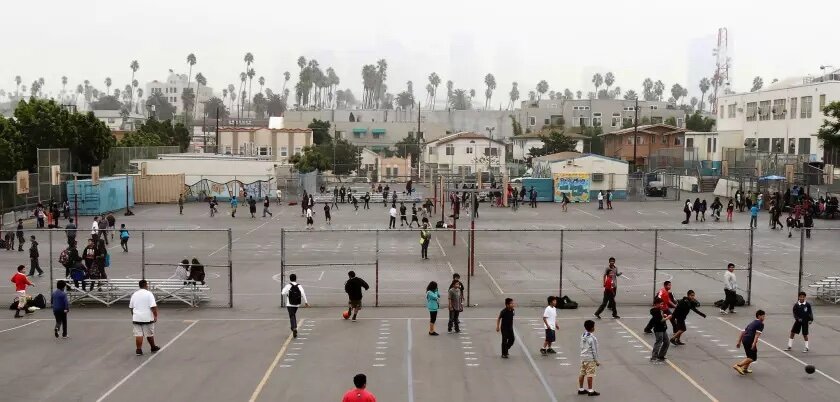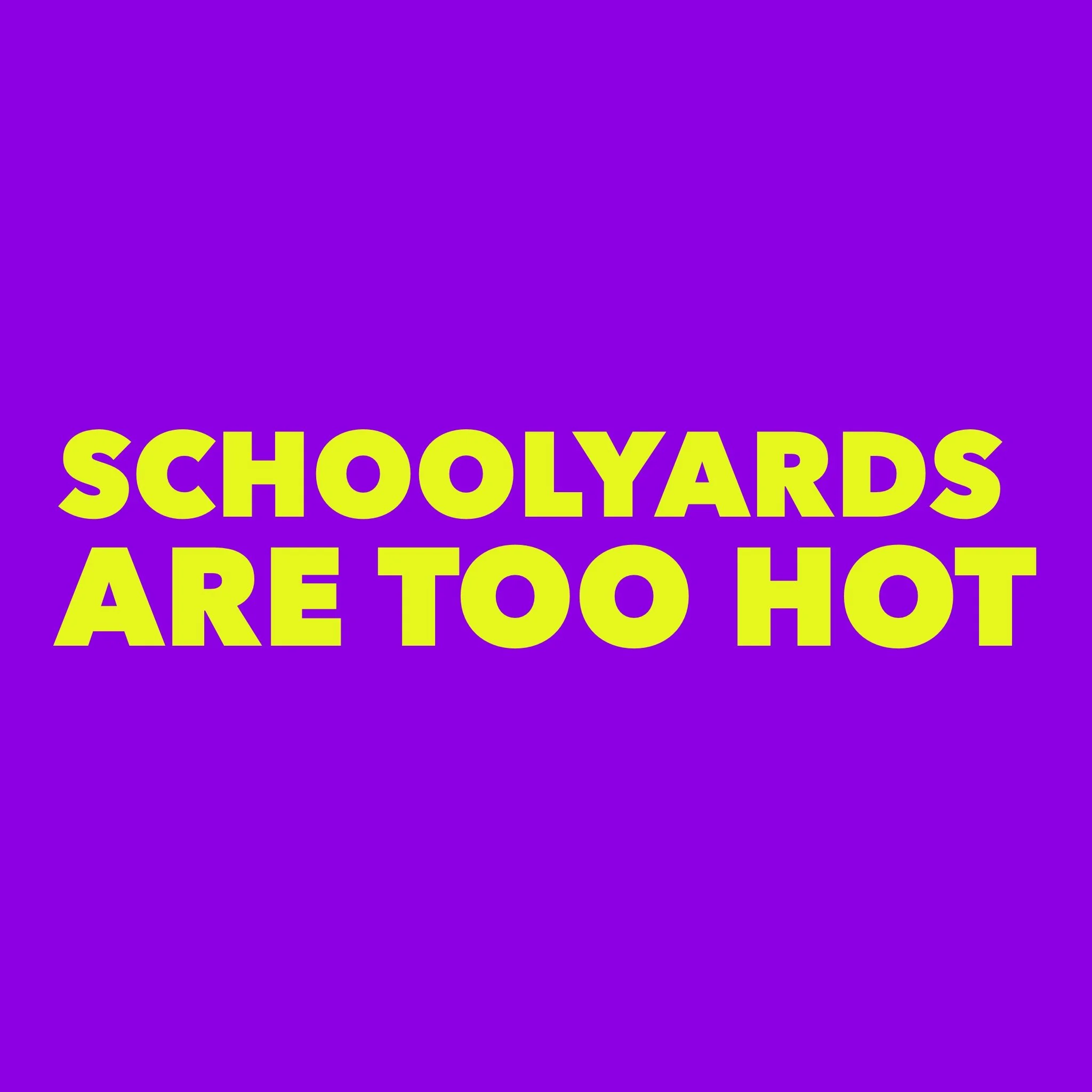
Why green a schoolyard?
-
According to the UCLA Luskin Center of Innovation, schoolyards are some of the hottest locations in communities.
-
![]()
Asphalt is hot
Asphalt absorbs heat, making it a hot surface that can burn children's skin but also raises the ambient air temperature, making the whole schoolyard a hotter area. A study published by the Journal of the American Medical Association shows that asphalt can reach 125 degrees even when the air is only 77 degrees. READ MORE
-
![]()
20% of LAUSD schools do not have a single tree
20% of LAUSD schools do not have a single tree and most schools do not have adequate shade for students playing at recess and after school. READ MORE
-
![]()
Urban Heat Island Effect
When an urban area has a lot of paved and built surfaces combined with the lack of an urban forest in Los Angeles, it contributes to the urban heat island effect, making urban areas 10-20 degrees hotter than nearby areas with more trees and plants. 92% of LAUSD schools are affected by the Urban Heat Island Effect.READ MORE
-
Impact on Children
Heat-related illnesses are some of the biggest challenges we face with increasing temperatures due to climate change. Higher temperatures lead to more deaths and illness, hospital and emergency room visits. Extreme heat can cause heat cramps, heat stroke, heat exhaustion, hyperthermia, and dehydration. Asthma is a leading cause of chronic disease-related school absenteeism nationwide. In addition—schoolyards without shade reduce physical activity and exacerbate behavior problems. READ MORE and MORE
-
Neighborhoods are cooler or hotter depending on how many trees they have. Unfortunately, trees are spread unevenly and unequally throughout the city.
-
![]()
Hot Spots
A neighborhood’s air temperature is determined by how many trees and paved surfaces it has. Lots of trees + few paved surfaces = lower temperatures. Fewer trees + a lot of paved surfaces = higher temperatures. This thermal map from National Geographic illustrates how neighborhoods with varying tree/pavement densities have over a 10-degree temperature difference, on July 3rd, 2020.
-
![]()
Red Lining
Many neighborhoods in Los Angeles lack parks and trees due to decades of discriminatory practice such as Redlining. Starting in 1939, financial services were withheld from customers who were classified as ‘hazardous’ to investment and their were areas marked red. Redlined communities were usually communities of color and it had little to do with their ability to pay back the loans.
-
![]()
Disinvestment
Redlining reduced land values which brought polluting businesses such as landfills, chemical plants, bus terminals, etc. because corporations knew it would be hard for residents to object through financial, political, or legal means. Despite Redlining becoming illegal in 1968, the long terms effects on neighborhoods are still felt to this day.
-
![]()
Pollution
Due to heavy air and water pollution, many redlined communities experience above-average chronic health conditions such as heart and lung diseases, asthma, hypertension, and diabetes. Without substantial trees density to clean the air, pollution is intensified which aggravates and exacerbates symptoms of chronic illnesses. Researchers say the impact of pollution is the “largest existential threat to human and planetary health.” READ MORE
-
![]()
LAUSD
LAUSD is the largest landowner in Los Angeles County—owning 6,400 acres, which amounts to 1,200 schools and 640,000 students. Schoolyards are a stable and widespread use of land that could significantly help improve air and water quality in Los Angeles.










